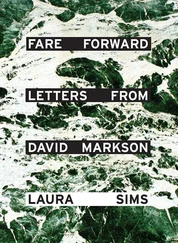“Tina.”
“You feel them, don’t you?” she said. “They’re going crazy in there. It’s not possible you can’t feel them.”
“The insects.”
An exhaled “yes!” like the report of a high-powered rifle. “Do you think it’s the Romme Vertegaal gestalt that’s animating them? The entomology, the North Korean connection…?”
She twisted around to face me. On her face was a terrible, frantic joy. “Program 5,” she said. “Switch to that and you can hear them. That’s what it’s for, isn’t it? It’s obvious! Romme knew this moment would come!”
“I don’t know what Program 5 is for. Even Elke couldn’t tell me precisely what it was for. I let her create it because of you, because of your North Korean obsession, and of course because I was curious, even about my hearing, what its potential might really be. We know that Romme was brilliant, so let his brilliance open up my head if it can. That’s what I was thinking. But honestly, I’ve been afraid to switch to it, partly because I think it’ll be disappointing, be just a bland expression of harmonic filtering, who knows what. Elke was very proud of her work with that difficult analoguevinyl-to-digital routine, and I hated to frustrate her by being so timid, but she let me go when I promised her that I would report back in detail after I’d had the courage to experiment with Program Vertegaal.”
I could not tell Célestine that I had another motivation in letting Elke Jungebluth manipulate me: I had become terrified that Célestine would make good on her promise to travel to North Korea in order to seek out Romme, to reconnect with him and to give her insect problem to him, all within the context of a farcical political rapprochement with the North Korean dictatorship. On one level her stratagem was complete madness, a fantasy, and on another it confirmed—I felt this with crushing pain—that she still loved him, loved him in a way that she did not love me, and that I was trapped in a wretched telenovela I would never escape.
Célestine cupped her left breast in both hands and offered it to me. “Switch it on and listen,” she said, with a breathless intensity whose hopefulness utterly deranged me. What husband has not avidly played the role of voyeur in his own house, watching the reflection of his wife in a window as she examines her vagina or anus with his chromed shaving mirror, one leg propped up on the white metal bathroom chair, searching for some real or feared lesion, polyp, secretion, or telltale discoloration? I would often catch Célestine examining her left breast in the most unconventional way: for sound, rather than sight. She would pull it up towards her left ear, her head cocked, manipulating it ruthlessly, as though it truly did not belong to her but was a ludicrously wrongheaded transplant or recent pathological growth, prodding it in order to provoke the insects into an aural frenzy loud enough to be recordable by the iPhone that sat propped up against a Kleenex box, the VU-meter of its Voice Memos app twitching with every rustle. Now it was my turn.
I hesitated, paralyzed. Her hair was wet from our exertions, glistening black and gray strands striping her cheeks. One strand was caught in the corner of her mouth, and I hallucinated that it was the leg of an enormous black-and-gray spider inadvertently exposed, patiently waiting inside her mouth for the insects to emerge. I forced myself to gently pull the leg from between her lips, which parted slightly to aid me, and swept it back over her ear. “You know, you’ve always been able to hear things that I’ve never heard, even with my very sophisticated bionics,” I said. “And you’ve never been able to successfully record the sounds of your insects. You’ve admitted that.”
“But this is Romme. This is Romme’s gift to both of us. It’s been created by his brilliance and by his understanding. This is a new thing.” She glowed as she said this, and the glow tormented me. She reached up with one hand, the other now palpating her breast, and touched the Pure module behind my ear. (I had chosen dark silver for its color, vain enough still to want it to disappear in my unruly nest of silver hair, which one of my students described as “confrontational philosophy hair, though not as intimidating as Schopenhauer’s hair.”) I took Célestine’s hand away from my ear, leaving it to hover uncertainly, and I reached up for the program switch behind my left ear and pressed it, methodically cycling through the programs from 1 to 5. Each cycle was accompanied by a unique sequence of musical tones cleverly designed to indicate which program one was entering, and because Célestine could hear those tones, when I arrived at Vertegaal her eyebrows immediately rose in bright, girlish expectation.
“The oven fan has been left on. I can hear it now,” I said.
Célestine laughed and pulled my head towards her breast with exaggerated nonchalance.
And then I heard them. The insects. They were there inside her breast, and I could hear them.
THERE ARE APPARENTLY BIOMARKERS present in exhaled breath which can be analyzed by a mass spectrometer for indications of many kinds of cancers and other diseases. Could there be an equivalent in exhaled or otherwise emitted sounds? Could Romme Vertegaal and his North Korean colleagues be in the vanguard defining a revolutionary new medical diagnostic system? Could my innocent, pragmatic Pure hearing aids have been transformed into an audio analogue of the mass spectrometer by the Listen to the Crickets program? In the light of day, none of this would stand up to scrutiny. But there, in the bed with Célestine, it was darkest night, and I could hear the insects in her left breast, and they sounded alive and present and real. I had always suspected that insects have what I think of as “species personalities”; that is to say, not personalities as individuals, but as individual species, so that certain of the nymphaline butterflies—the admirals, commas, anglewings, tortoiseshells—all have a habit of landing on your head when you are trying to catch them, and when you move abruptly, they fly off, only to circle and return to the top of your head—behavior you would never see in a monarch or a tiger swallowtail. In Célestine’s bunched breast, now covered with the liquid sheen of excitement, there were eight species of insects I could discern, all by the sounds they made, sounds which generated an image in my mind of the organs—legs or wings stridulating, tymbals vibrating—which produced those sounds. As part of my life’s philosophical enterprise I had—naturally, it seemed to me—been drawn to entomological studies, because I could not see how a philosopher could avoid engagement with the existence and meaning of such forceful yet utterly non-human life-forms. It always amused me to observe the pathetically desperate hunger expressed in popular culture for life-forms on other planets, when underneath the very feet of these seekers of aliens, and roundly ignored by them, were the most exotic, grotesque, and fabulous life-forms imaginable. But as a student of insect life I could not become more than a dabbler, so immeasurably deep is the subject. The lecture I delivered at the Club Immédiat, which I titled “Entomology Is a Humanism”—a playful, though pointed, reference to Sartre’s famous lecture “Existentialism Is a Humanism”—incorporated most of the substance of my entomological learning, and is there for all to see in all its shallowness. I could not, in other words, accurately name the species of every insect represented in Célestine’s breast. And how many of them could there be? Was there only one specimen of each species, so that the answer would be eight? Or, following the paradigm of Noah’s ark, was there a male and female of each animal? A cicada, certainly. A mud-daubing wasp. A robber fly. An assassin bug. Several species of ant. My mind swelled with odd, comically disorienting images that seemed to bring along their own sound tracks: the savage swarming of the marabunta , the billion-strong soldier-ant army in the 1954 Charlton Heston movie The Naked Jungle ; a show on the Discovery Channel examining insect parasites that turned their hosts into zombies serving the needs of the parasites; a YouTube parody of The Green Hornet in which the masked hero is actually a hornet that is fatally swatted by his Japanese sidekick, Kato, whose sound track was “Flight of the Bumblebee,” complete with theremin hornet-buzz effect as per the old radio show. (I wasn’t sure whether I had actually seen this Hornet video or hallucinated it.)
Читать дальше
Конец ознакомительного отрывка
Купить книгу







![David Jagusson - Fesselspiele mit Meister David [Hardcore BDSM]](/books/486693/david-jagusson-fesselspiele-mit-meister-david-har-thumb.webp)




